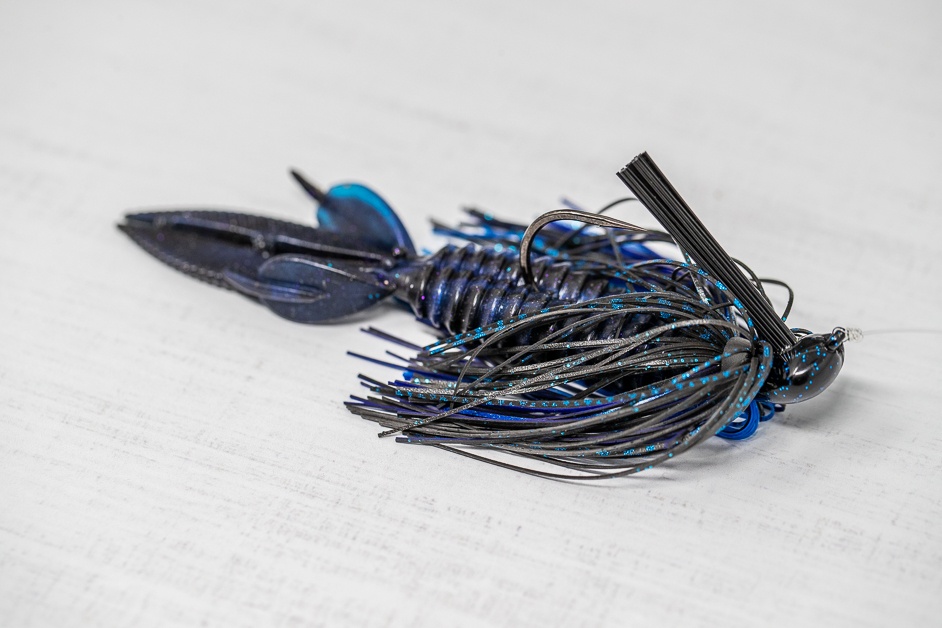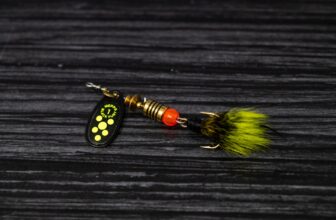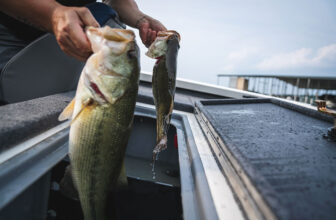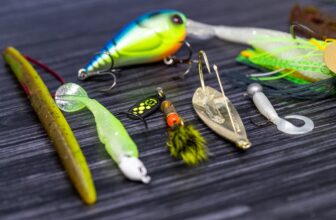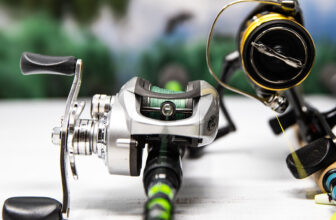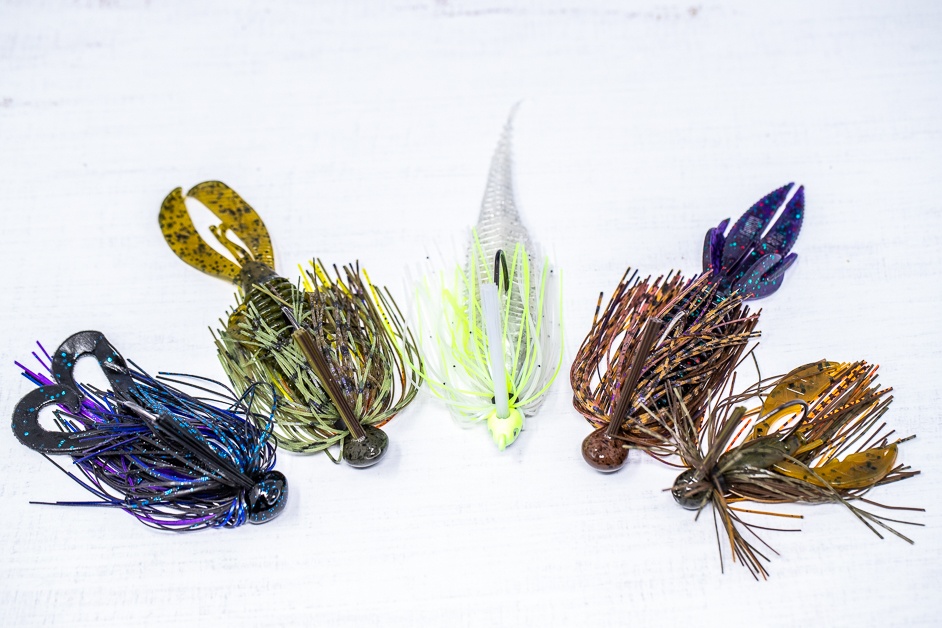
Catching any fish can be rewarding, but it’s even more enjoyable when you’re reeling in big fish. For this, it’s a good idea to turn to skirted jigs, which are not only capable of catching the biggest fish in the water but can also be used year-round in a wide variety of water conditions and levels. There’s much to love about skirted jigs, which are generally considered to be the most effective and versatile type of bait, so it’s always good to have a few to hand!
However, while they’re effective, they’re not the easiest lure to master. Anyone can find success with skirted jigs, but if you want to make them a staple of your fishing process, then you’ll need to learn a thing or two.
And that’s why we’ve put together this article. On this page, you’ll find everything you need to know about skirted jigs, including what they are, the different types, the correct setup for use with skirted jigs, techniques, and recommended trailers.
So without any more preamble, let’s dive into it.
What is a Skirted Jig
A skirted jig is a type of lure. Originally, it was intended to mimic a crawfish. However, in recent years this has developed, and now you can find skirted jigs that shad or bluegill, among other water-based creatures that bass can’t help but eat! It’s designed to catch bass, and because of the strength and versatility of the lure, you can sometimes end up catching very big bass indeed.
Types of Skirted Jig Lures
Part of the magic of skirted jig lures is that they’re so versatile. There are numerous different types, so no matter what conditions you’re fishing in, there can be one in the box that’ll help to get fish to bite.
Let’s take a look at some of the most common types.
Casting Jigs
Casting jigs are the most common type of lure used in bass fishing. Part of the appeal is that they’re considered to be “all-purpose”; that is to say, you can use them with virtually all fishing techniques. You’ll find them being used by seasoned pros and beginners, but especially beginners, since they’re great for getting the hang of jig fishing.
The versatility extends to virtually all aspects of jig fishing. You can use them in a bunch of different covers, making them ideal if you’re in a lake that has numerous. They’re also expertly designed, large enough to have the balance factor just right, but slender enough to make it through water weeds and other vegetation.
Swim Jigs
Swim jigs are generally slimmer than other types of skirted jigs. This means that it can glide through water and vegetation with relative ease. The reason why they’re shaped so thin is because they’re supposed to mimic baitfish; most other types of skirted jig are supposed to mimic crayfish. You’ll generally use a straight retrieve technique with swim jigs, but it’s also possible to let it sink to the bottom or just the jerk approach, especially if you’re not getting many bites. Part of the appeal of swim jigs is that you can cover a lot of area with greater success than other power fishing baits.
Finesse Jigs
Finesse jigs are smaller than arkie jigs and are supposed to be used with a technique called ‘finesse fishing,’ which is a slower way of fishing. They work especially well in clear water with hard bottoms and light cover. If you’re not catching too many fish, then pulling out a finesse jig can be a great way to get some on the hook.
Best Skirted Jig Setup
Choosing the right jig for your needs (as in, the fish that you’re trying to catch) is important, but of equal importance is ensuring that you have the right set up. This will make using the jig much more straightforward.
If you have a modern spinning setup, then you’ll be able to use your jig; they’re capable of handling them just fine. The length is key, however — generally, it’s best to use a rod that’s around 7 feet. This will allow you to cast with the correct presentation when you’re lowering and raising the tip. It’s key to go with strength since you’ll find yourself in many a battle with a fish that’s swimming through dense cover.
Pay attention to the action of the rod, too—the more strength in the rod, the better since this will help to hook larger fish. Fast action is the way to go, as regular rods can be a little too flimsy for this type of fishing, making it more likely that the fish will get away. Fast action will allow you to detect any bites from the fish, even if they’re only little bites.
For your line, it’s best to go with a braid with a leader. This will allow you to get a feel when you’re fishing in deep water. The reel that you use will come down to your personal preference, however, when you’re skirt jig fishing, finesse and sensitivity is everything, so go for one that can take your subtle motions and reflect them underwater.
How to Fish a Skirted Jig
Now that you’ve got the setup you need, it’s time to learn how to fish using a skirted jig. There are various techniques that you can use to fish using a skirted jig. They’re all fun, and it’s a good idea to have several in your backpocket so that if one isn’t working, then you can move onto another technique.
Flipping
Using the flipping method means releasing the line in the direction of bass that are only a few feet away. Pinch your line between the reel and the first guide, and then lift up the rod so that the line dangles, and then begin swinging. When there’s enough momentum in the swing, let it go — the bait will hit the water, and the bass will bite (hopefully).
Punching
Punching involves putting your line into the water and then aggressively bringing the line up a few feet. Then, you pause. It’s at this point that the bass should take a bite!
Dragging
Dragging is for use in deep water, across the bottom. Simply cast until your jig hits the bottom, and then drag it across. If there are schools of fish there, they’ll bite.
When to Fish a Skirted Jig
One of the main advantages of using skirted jigs is that they can be used all year round. However, how you use them will differ depending on the season.
Winter
In winter, it’s best to use a football skirted jig. This will allow you to cast in hard bottom areas, which is generally where fish will be when the temperature of the water is under 45 degrees. You’ll need to slowly drag the jig across the bottom, pausing occasionally. Since fish aren’t as aggressive during this time of year, you’ll need to pay attention to even the smallest nibbles — that’s the sign that you’re on the right track.
Summer
During the summer, you’ll find many bass fish in shallow water. They’ll generally be undercover, such as by rocks, grass and weeds, or even under docks. Finesse jigs are best for this type of fishing. Other bass fish prefer to go deeper underwater; for this, take a look at using football jigs since they’ll be able to navigate all the bumps that you’ll encounter at deeper levels.
Fall
During the fall, the bass fish that had been riding out the heat of the summer in deeper waters will come up. It’s at this point that they feed on baitfish. As such, you’ll find a lot of value in using swim jigs since they’re designed to mimic baitfish. At this time of year, it’s especially important to match the jig with the color and actions of the baitfish. While you’ll mostly use swim jigs, if you’re not having much success with them, then switch to a finesse or flipping jig, both of which can be effective, especially if there’s a dense cover.
Best Jig Trailers
You can boost the effectiveness of your skirted jig by adding a trailer. There are many materials to choose from, but generally, the experts agree that the best jig trailers help amplify the jig’s effectiveness by attracting the bass’ attention and give the fish something munchworthy to nibble on. There’s a long line of trailer types, too, such as ones that mimic crawfish and baitfish, so choose the one that is based on the jig you’re using. Trailers are especially recommended for beginners since many come with a scent that makes extra appealing to bass.
Conclusion
As we’ve seen, there’s much to know about fishing for bass with a skirt jig! But if you have a selection of different types in your tackle box, then you’ll find that they can bring a lot of success, providing you’re able to match the right jig with the environment. It can be a little difficult to get the hang of the techniques, but once you do, you’ll find that it’s a skill that you can master — and catch plenty of fish using!

